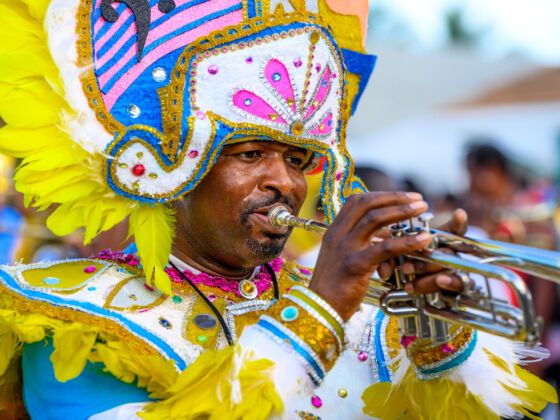EARLY IN THE MORNING on Boxing Day and New Year’s Day, Bahamians celebrate Junkanoo. Groups of up to a thousand each parade along Bay Street and Shirley Street in Nassau wearing elaborate costumes and dancing or playing goatskin drums, horns, bells, or whistles, as thousands more watch and dance on the sidelines.
The festival starts around 1 or 2am and doesn’t finish until 9am, when winners are announced: best music, best costume, and best overall group awards, with rivalries between the Saxons, Valley Boys, One Family, The Music Makers, Roots, and Prodigal Sons – each with loyal followings.
